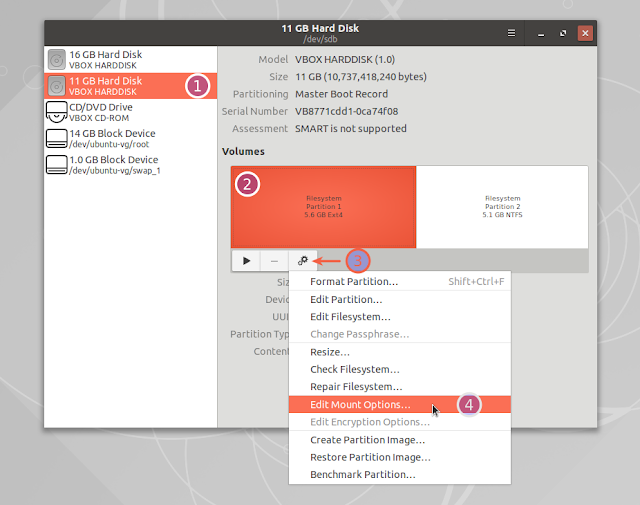How To Auto-mount Partitions On Startup Using Gnome Disks
Gnome Disks has many features, like S.M.A.R.T. monitoring, partition management, benchmarking, and more, including one that might not be obvious, but is very useful: it can set drives to mount automatically at startup.
Use it to auto-mount your new hard disk that uses Ext4, your Windows NTFS / exFAT partition, etc.
Disks, or Gnome Disk Utility, is installed by default in many Linux distributions, including Ubuntu, Fedora, both Linux Mint Cinnamon and MATE, Xubuntu, and so on. If it's not installed, use your Linux distribution's package manager to install it - search / install
For each partition you set to mount automatically on startup, Gnome Disks adds an entry in your
Start by launching "Disks" from your applications menu. Choose the hard disk from the left Disks sidebar, select the partition you want to auto mount on startup, then click the button with the gears icon under it, and click
In the mount options, toggle the
To test the changes, you can reboot your system or type the following command to mount all filesystems mentioned in
Use it to auto-mount your new hard disk that uses Ext4, your Windows NTFS / exFAT partition, etc.
Disks, or Gnome Disk Utility, is installed by default in many Linux distributions, including Ubuntu, Fedora, both Linux Mint Cinnamon and MATE, Xubuntu, and so on. If it's not installed, use your Linux distribution's package manager to install it - search / install
gnome-disk-utility.For each partition you set to mount automatically on startup, Gnome Disks adds an entry in your
/etc/fstab file, useful for those who are not very familiar with editing /etc/fstab. That means each partition mounted on startup through Disks is available system-wide, and not just for your user.How to auto-mount partitions on startup using Gnome Disks
Start by launching "Disks" from your applications menu. Choose the hard disk from the left Disks sidebar, select the partition you want to auto mount on startup, then click the button with the gears icon under it, and click
Edit Mount Options:In the mount options, toggle the
User Session Defaults option (this may be called Automatic Mount Options on older versions) to enable the options below it, and make sure Mount at system startup is enabled. You can enter a name under Display Name. The defaults should be enough for most users, so you don't have to change anything here. After you're done, click OK:To test the changes, you can reboot your system or type the following command to mount all filesystems mentioned in
fstab (since Disks sets partitions to auto-mount on startup by adding them to /etc/fstab):sudo mount --all









